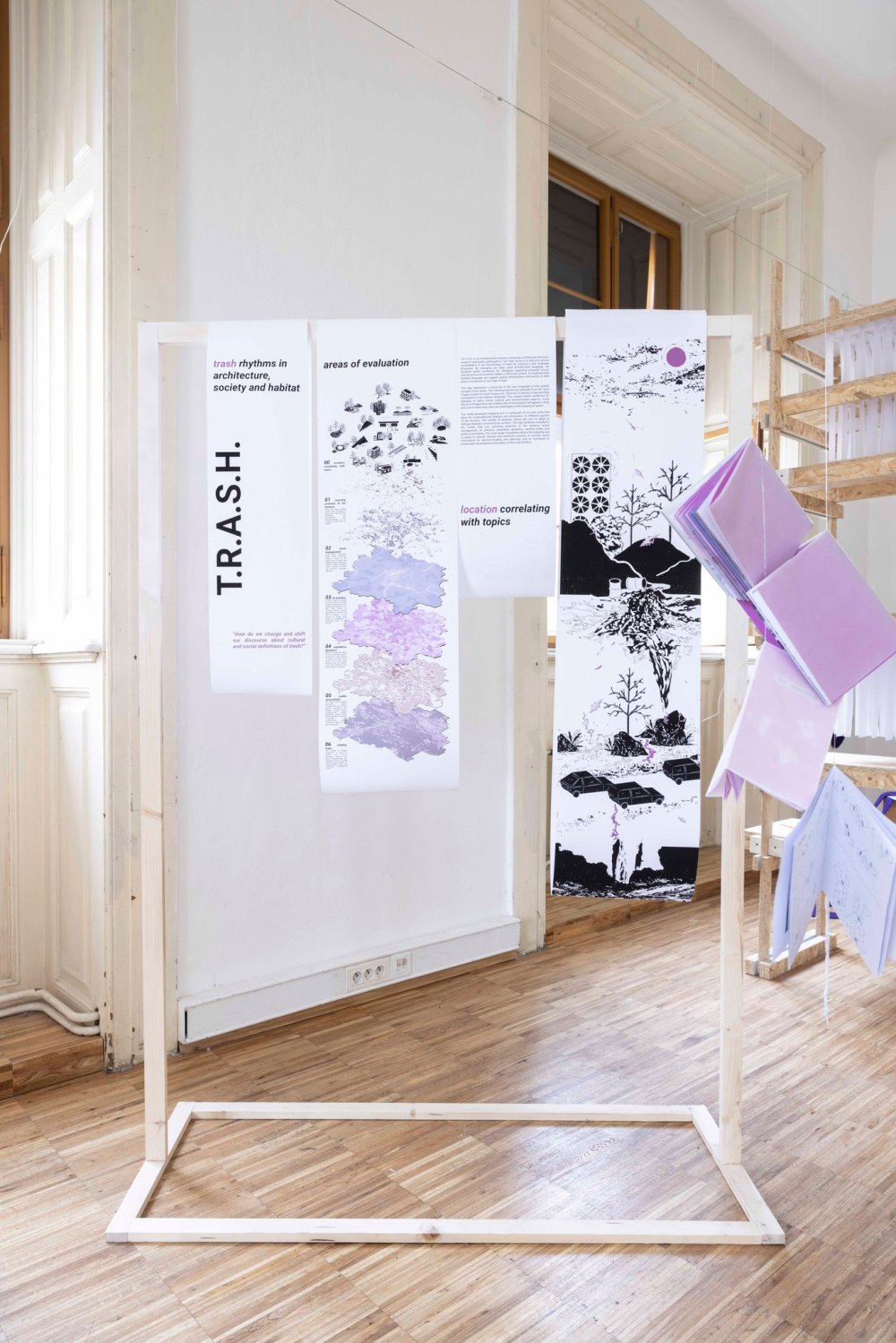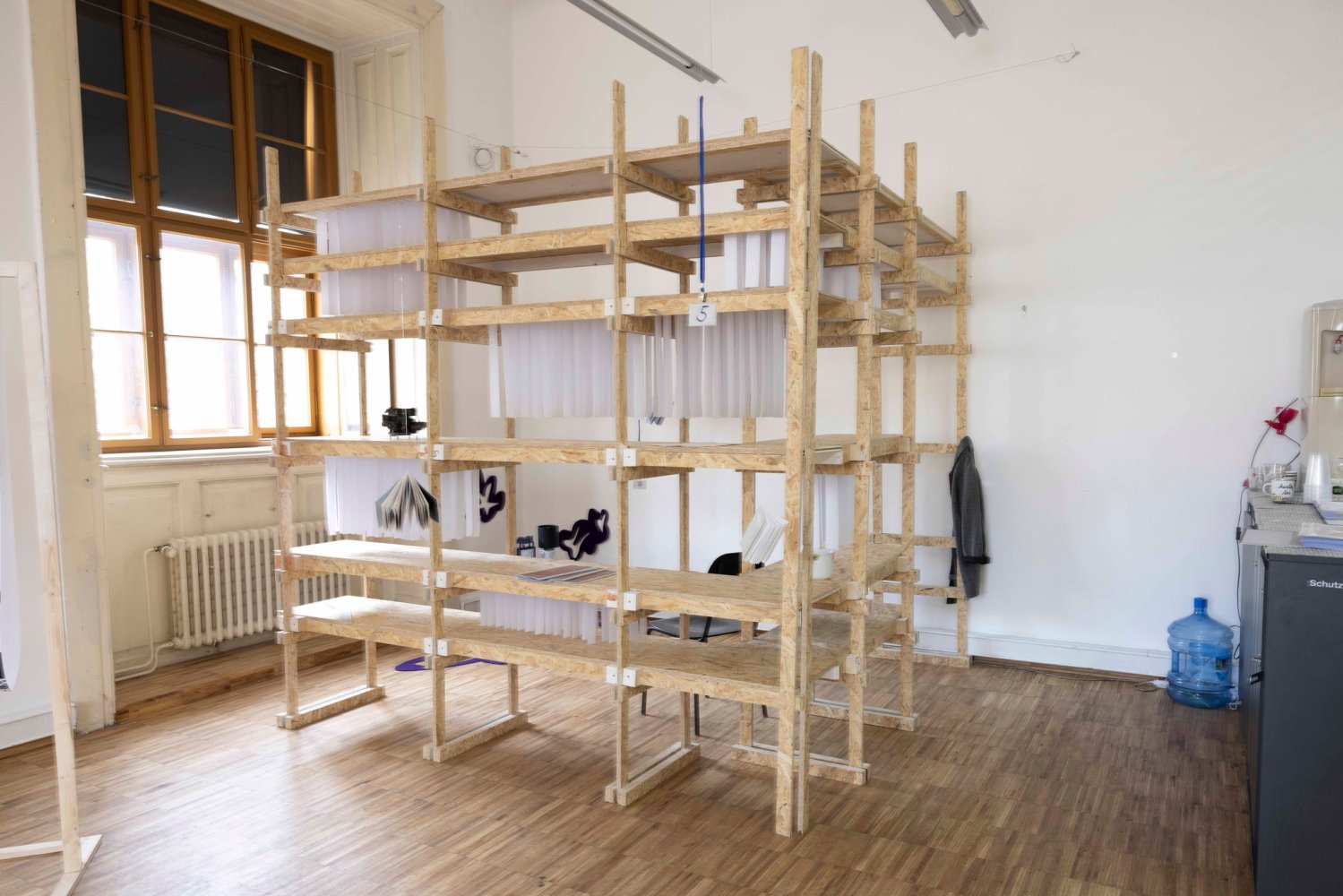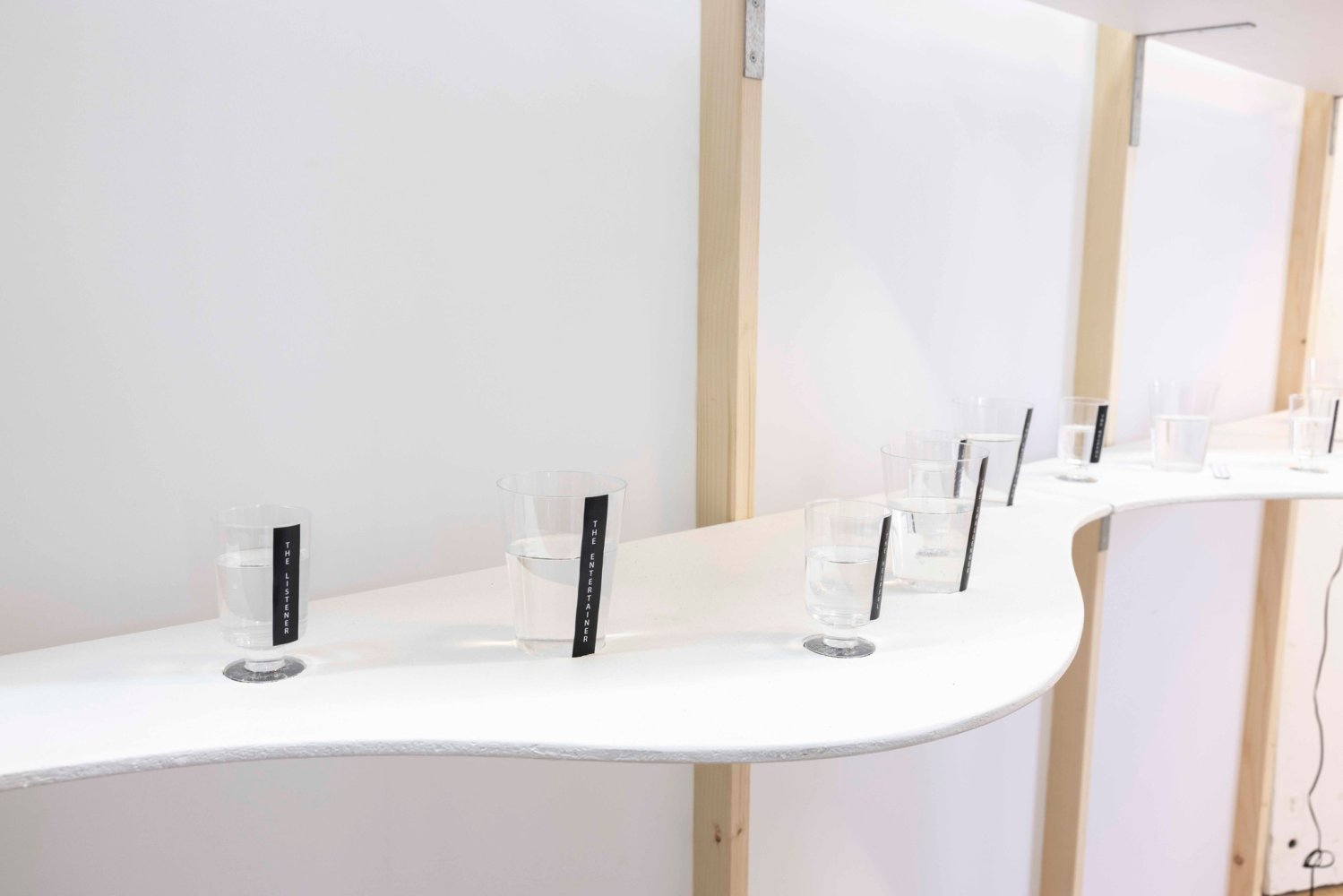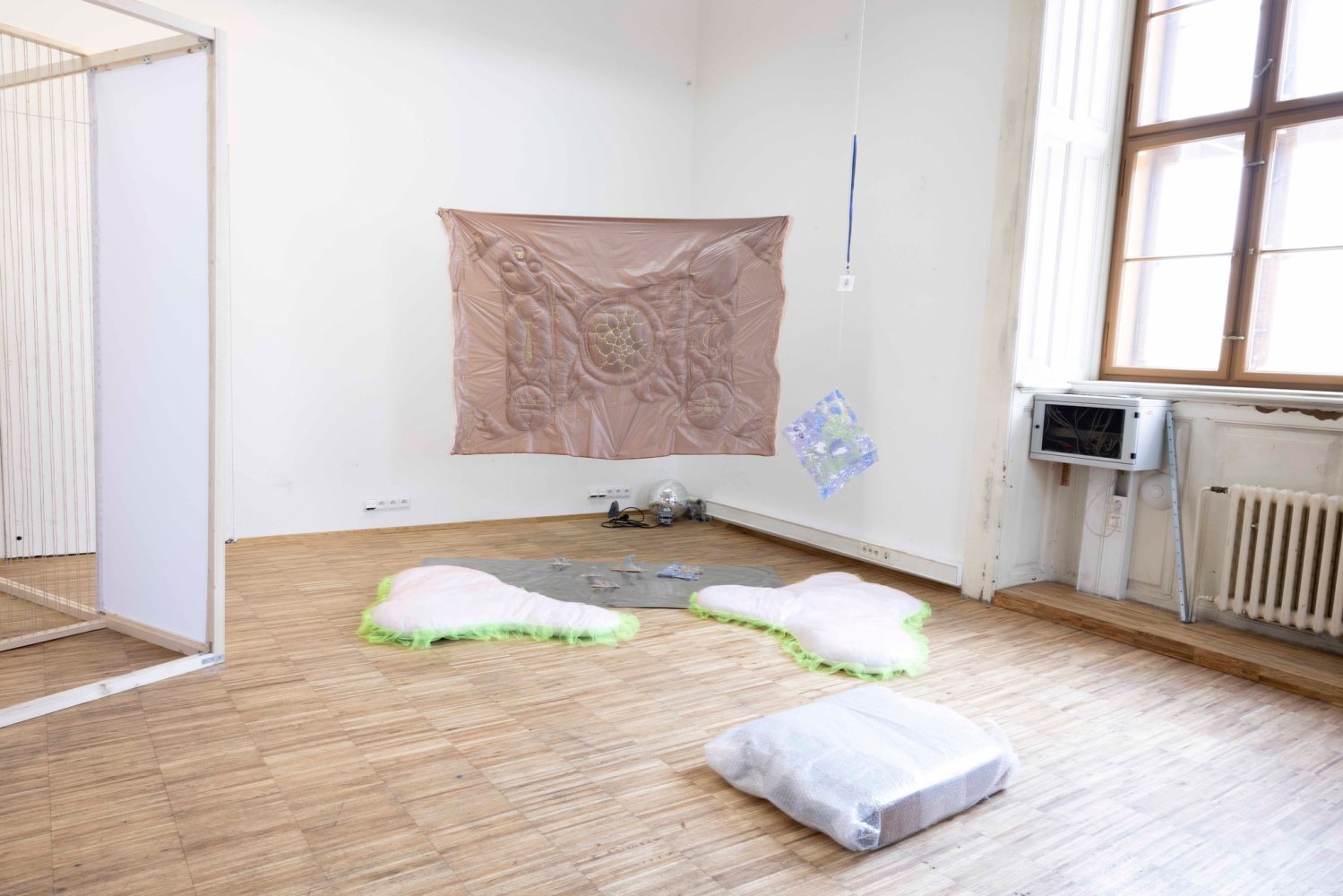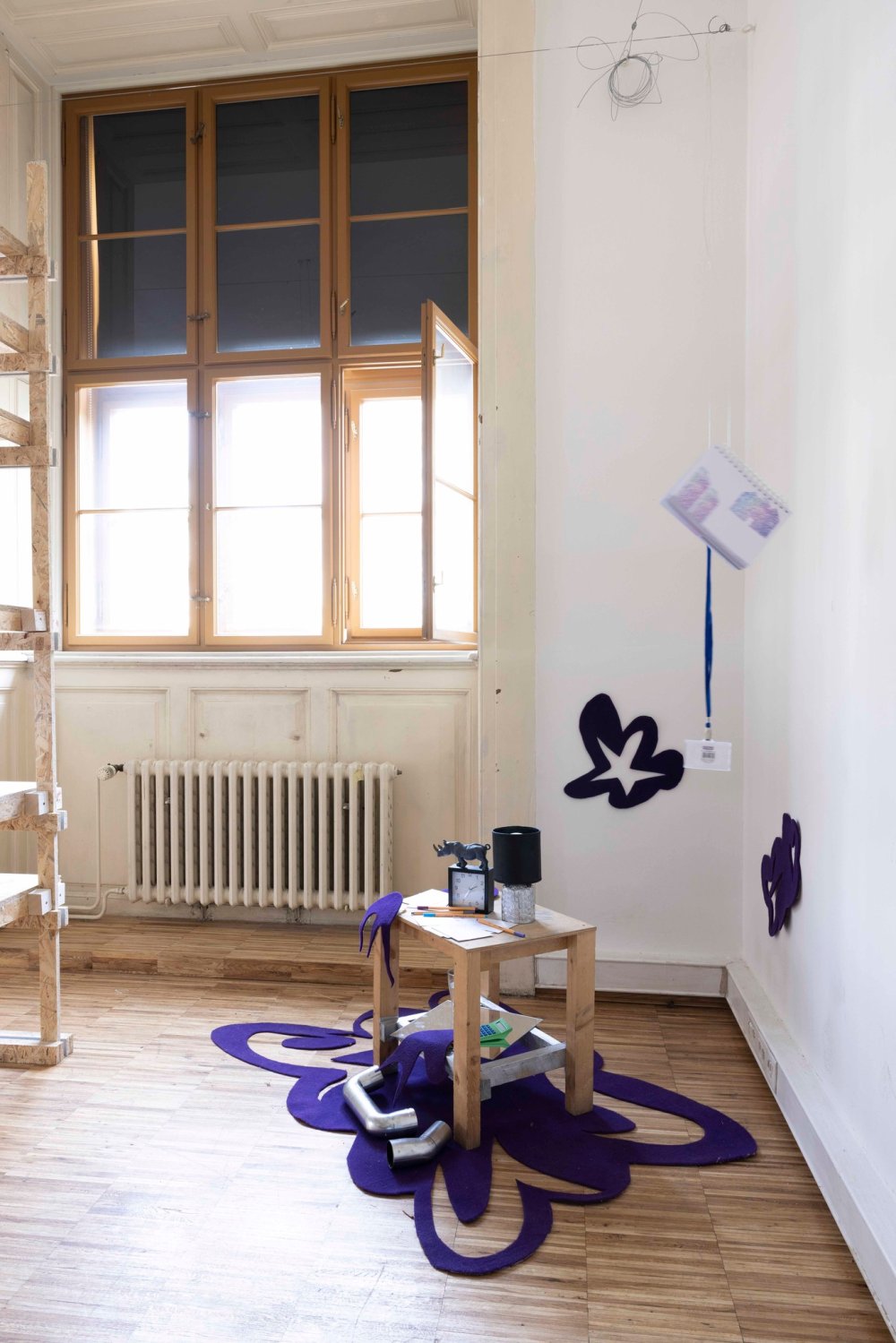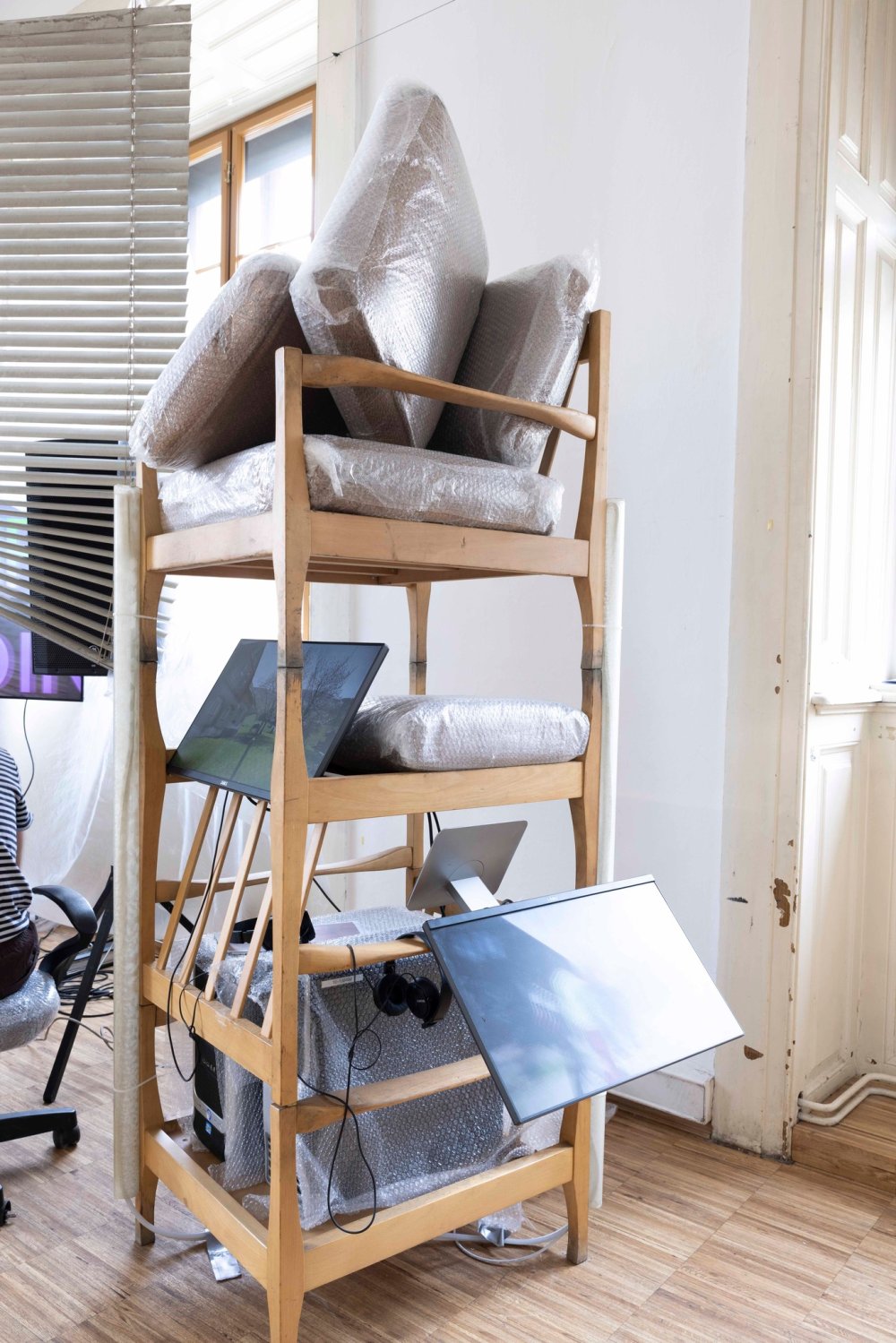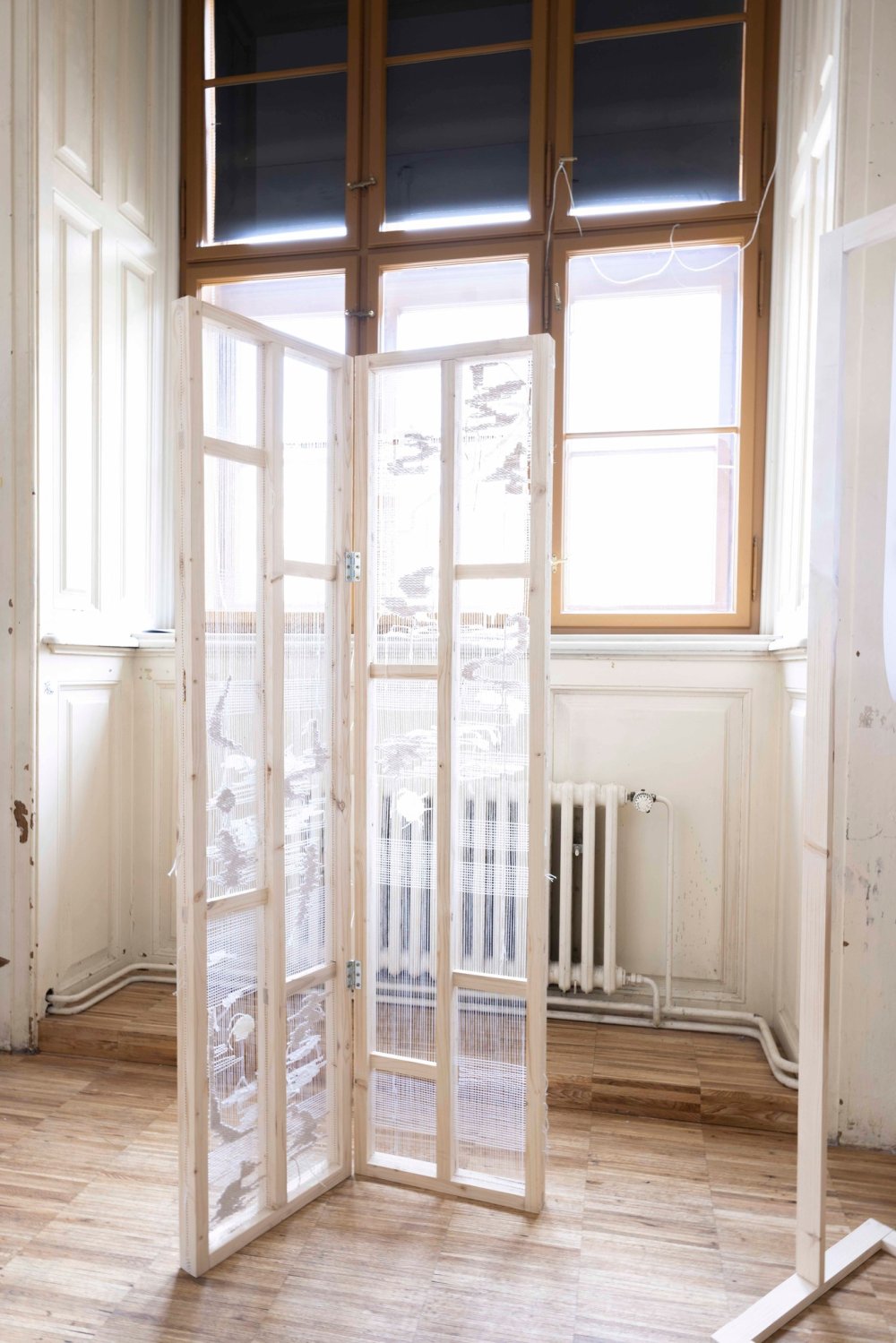Here is a look back at the summer semester in the Studio Architecture 2|Future Architectures Platform (A2|FAP) with the theme Future Architectures PRACTICE, OFFICE, WORK.
photo: Peter Fabo
Teambuilding - studio A2 summer 2022/2023 semestral exhibition
In a world where precarious work becomes an increasingly pressing issue, the topic of Czech Republic’s pavilion at the 2023 Venice Architectural Biennale is ‘The office for a non-precarious future’. Teambuilding foreshadows A2’s planned residency at the Czech pavilion - we confronted the problematics of architecture work and approached it as students and professionals at the very beginning of our careers.
The semestral project was initiated by research of historic and contemporary architectural offices across the Czech and international context over the last 100 years, which is compiled in the ‘Teambuilding’ book. We then assessed the knowledge gained and tackled issues of ethics, wages, hierarchy, work environment and many others in the design of four hypothetical offices, which are represented by films, booklets and physical objects. We conceived practices that deal with waste, question the need for sacrifice in employment or nocturnal work, highlighting the importance of the human edifice in design and more.
The outcomes are interwoven with post-anthropocentric perspectives, cynicism, optimism and hope. One of the distinct features of work in architecture and what likely makes it most prone to precarious conditions, is that we constantly deal with immeasurables - we are driven by a visceral love for our field, we refuse not to address a task in a wide scope, even if the remuneration does not add up with the cost.
In correlation with that, the curatorial and scenographic solution for the exhibition is an immersive workplace environment. It is composed of 1:1 fragments of the offices designed and structures built from disused equipment that we gathered from offices bound to be demolished across Prague. The unmistakable aesthetics of an office are interpreted in an airy way. Teambuilding is a demand for a more just future, a conception of new types of architectural practice and most importantly, a collective effort.
Presented projects:
1 - T.R.A.S.H.
Barbora Svobodová, Anna Šťastná, Sissel Esbensen, Michal Klimeš
Trash Rhythms in Architecture, Society and habitat (The dictionary of Territorial Project for Social and Ecological Change)
T.R.A.S.H. is an architectural institute combining architecture practices, research and public participation. Our main focus is to discuss various connotations in the terminology of trash by creating a new language dictionary. By changing our daily used architectural language, we facilitate better conditions for dialogues regarding essential social, cultural and environmental matters in the local context. To implement the created language, we suggest spatial interventions and events to take place at locations on our map of sites.
2 - Together and apart
Julia Peric, Julián Chytil
This project is a translation of the experience during this semester both as a project and teamwork, and reflects upon the idea of togetherness. People became the center point of understanding the diversity of needs and perspectives. These ideas are expressed in a conceptual model through three main components. The objects represent privacy, human values, and the social behavior one needs to comprehend for a well-functional office dynamic.
3 - Hood collared - most of us hide together
Viktor Eichler
Even though the public idea of well-known white-collared architect’s and designer’s dress code is still the infamous black-coloured turtleneck and chunky glasses, the reality of the precarious workers behind is mostly dressed in the relaxed(looking), stress-stained, not so washed hoodie - still mostly black to sustain the impression of “mystery” and “professionalism” of the industry. As this effect of blurring the line between the personal vs. work life balance and the “relaxation” and “flexibilization” of the workplace does not really correspond to the actual productivity x wage compensation curve, our goal should be to organize and unite.
By simply advancing everybody’s daily love, work speculates new modes of using the omnipresent garment, functional for well needed private, intimate, interpersonal, collective and, cozy situations and connections.
4 - Altar
Mariana Chavíková, Dan Růžička, Réka Szatmári
The modern altar is a symbolic structure that transcends its traditional context, representing a sacred space for reflection, connection, and worship. It serves as a focal point for spiritual practices, a site of offerings, and a place where communities come together. In our boat journey, we have chosen to create an altar as a testament to the power of architecture beyond physical construction. It creates a space of shared experiences.
The altar embodies both the sacrifices and the sacred aspects of our journey. On one side, it represents the sacrifices we make by challenging the idea of a traditional architecture office. On the other side our shared experiences on the boat and our collaborative spirit.
At the same time, the altar serves as a versatile space for gathering and community-building. It can be used as a tablecloth where we come together to share meals, celebrate important events, and nurture connections. It can transform into a rug, inviting us to sit in a circle and engage in meaningful conversations. Its purpose is to facilitate the creation of an inclusive, welcoming environment where everyone can feel a sense of belonging and participate. We are not simply bringing a pre-made structure on our journey. Instead, we collectively build and embroider the tapestry during our voyage.
5 - FI:RE
Mia Maripuu, Matyáš Kytka, Mikuláš Beck, Krištof Krebs
FI:RE is an architecture data-based office.
We are a company that seeks to make forgotten and remote places visible by offering to re-explore the sensitive and fragile relationships of their inhabitants with each other and with their surroundings. We strive to prove that architecture is not about beauty, but about humanity, connection, atmosphere and emotion. Through compiling the information we gather into a very detailed database and then, thanks to unique and personal contact with locals, we work with cities and regions on possible solutions and the development of manuals and plans.
The exhibition consists of three objects representing three steps of our work:
Information gathering - how do we collect data and what data do we even ask? The first book takes you through the story of one village and show you what is open to find and what is uncovered.
Information storage - since our studio is based on extracting and managing information, the place to continue with is shelves full of information.
Information processing - the second book is meant to give a glimpse of Tallinn from A to Z, covering the representative aspects of soft and hard data.
6 - Architecture dreaming
Tereza Staňková
The Architecture dreaming project is based on my reflections on healthy working environments and the often-discussed nocturnal work. I was interested in whether and how the work environment and workload affects the sleep and dreams of individual architects. Dreams can be an inspiration coming in, a reflection of sheer frustration, or even a nightmare.
The book Architecture dreaming aims to motivate architects not to underestimate the productivity benefits of a healthy sleep, and points out that you are not crazy when you dream of flying in the 3d space of the modeling program Rhino, or tracing the edge of a sidewalk in autocad before you can walk on it. It maps out the effects of overtime and sleeplessness in architecture, showcases collected dreams from architects, and includes a dream guide.
* - Teambuilding (exhibition production)
Sofie Gjuričová, Adam Kučera, Patrik Platil, Vojtěch Beneš, Jan Vacek, Alexander Cook Storek
The outcomes of all above-mentioned future architecture offices are interwoven with post-anthropocentric perspectives, cynicism, optimism and hope. One of the distinct features of work in architecture and what likely makes it most prone to precarious conditions, is that we constantly deal with immeasurables - we are driven by a visceral love for our field, we refuse not to address a task in a wide scope, even if the remuneration does not add up with the cost.
The curatorial and scenographic solution for the exhibition is an immersive workplace environment. It is composed of 1:1 fragments of the offices designed and structures built from disused equipment that we gathered from offices bound to be demolished across Prague.
Besides the architecture of the exhibition, we curated an office-themed party with a bar and a special drink for the opening, created graphics, which incorporate an old water-cooler and co-dependent office chairs, built a video projecting tower and installed a projection above the entrance. The unmistakable aesthetics of an office are interpreted in an airy way. Teambuilding is a demand for a more just future, a conception of new types of architectural practice and most importantly, a collective effort.
